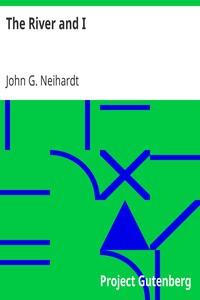|
|
Read this ebook for free! No credit card needed, absolutely nothing to pay.Words: 28343 in 8 pages
This is an ebook sharing website. You can read the uploaded ebooks for free here. No credit cards needed, nothing to pay. If you want to own a digital copy of the ebook, or want to read offline with your favorite ebook-reader, then you can choose to buy and download the ebook.

: Scientific American Supplement No. 508 September 26 1885 by Various - Science Periodicals Scientific American@FreeBooksTue 06 Jun, 2023 EXPERIMENTS IN MEMORY. When we read how one mediaeval saint stood erect in his cell for a week without sleep or food, merely chewing a plantain-leaf out of humility, so as not to be too perfect; how another remained all night up to his neck in a pond that was freezing over; and how others still performed for the glory of God feats no less tasking to their energies, we are inclined to think, that, with the gods of yore, the men, too, have departed, and that the earth is handed over to a race whose will has become as feeble as its faith. But we ought not to yield to these instigations, by which the evil one tempts us to disparage our own generation. The gods have somewhat changed their shape, 'tis true, and the men their minds; but both are still alive and vigorous as ever for an eye that can look under superficial disguises. The human energy no longer freezes itself in fish-ponds, and starves itself in cells; but near the north pole, in central Africa, on Alpine "couloirs," and especially in what are nowadays called "psycho-physical laboratories," it maybe found as invincible as ever, and ready for every fresh demand. To most people a north pole expedition would be an easy task compared with those ineffably tedious measurements of simple mental processes of which Ernst Heinrich Weber set the fashion some forty years ago, and the necessity of extending which in every possible direction becomes more and more apparent to students of the mind. Think of making forty thousand estimates of which is the heavier of two weights, or seventy thousand answers as to whether your skin is touched at two points or at one, and then tabulating and mathematically discussing your results! Insight is to be gained at no less price than this. The new sort of study of the mind bears the same relation to the older psychology that the microscopic anatomy of the body does to the anatomy of its visible form, and the one will undoubtedly be as fruitful and as indispensable as the other. SINKING OF THE QUIEVRECHAIN WORKING SHAFT. The sinking of mine shafts in certain Belgian and French basins, where the coal deposit is covered with thick strata of watery earth, has from all times been considered as the most troublesome and delicate, and often the most difficult operation, of the miner's art. Of the few modern processes that have been employed for this purpose, that of Messrs. Kind and Chaudron has been found most satisfactory, although it leaves much to be desired where it is a question of traversing moving sand. An interesting modification of this well-known process has recently been described by Mr. E. Chavatte, in the Bulletin de la Societe Industrielle du Nord de la France. Two years ago the author had to sink a working shaft at Quievrechain, 111 feet of which was to traverse a mass of moving and flowing sand, inconsistent earth, gravel, and marls, and proceeded as follows: From the beams, A B and E F, there was suspended a red fir frame by means of thirty-four iron rods. Upon this frame, which was entirely immersed in the moving sand, there was established brick masonry . As the ends of the timbers entered the latter, and were connected by 1 1/2 inch bolts, they concurred in making the entire affair perfectly solid. The frame, K K, was provided with an oaken ring, which was affixed to it with bolts. After this, a cast iron tubbing, having a cutting edge, and being composed of rings 3.28 feet wide and made of six segments, was lowered. This tubbing was perfectly tight, all the surfaces of the joints having been made even and provided with strips of lead one-tenth of an inch thick. It weighed 4,000 pounds to the running foot. It was first raised to a height of fifteen feet, so as to cause it to enter the sand by virtue of its own gravity. It thus penetrated to a depth of about twenty inches. After this the workmen were ordered to man the windlasses and hoist out some of the sand. This caused the tubbing to descend about eight inches more, when it came to a standstill. It was now loaded with 17,000 pounds of pig iron, but in vain, for it refused to budge. Mr. Chavatte therefore had recourse to a dredge with vertical axis, constructed as follows: Upon a square axis, A B , provided with double cross braces, C D, and strengthened by diagonals, were riveted, by their upper extremities, two cheeks, G H, whose lower extremities held the steel plates, I J I' J', which, in turn, were fastened to the axis, A B, by their other extremities. These plates were so inclined as to scrape the surface of the ground over which they were moved. They each carried two bags made of coarse canvas and strengthened by five strong leather straps . To the steel plates were riveted two plates of iron containing numerous apertures, through which passed leather straps designed for fastening thereto the lower part of the mouth of the bags. That portion of the mouth of the latter that was to remain open was fastened in the same way to two other plates, X Y, X? Y? , held between the lower cross-braces. When the apparatus was revolved, the plates scraped the earth to be removed, and descended in measure as the latter entered the bags. These bags, when full, were hooked, by means of the five rings which they carried, to the device shown in Fig. 8 , and raised to the surface and emptied into cars. The dredge was set in motion by four oak levers . Two of these were manned by workmen stationed upon the surface flooring, and the other two by workmen upon the flooring in the tubbing. The axis was elongated, in measure as the apparatus descended, by rods of the same dimensions fastened together by cast iron sleeves and bolts . The steel plates were not capable of acting alone, even in cases where they operated in pure moving sand containing no pebbles, for the sand was too compact to be easily scraped up by the steel, and so it had to be previously divided. For this purpose Mr. Chavatte used rakes which were in form exactly like those of the extirpators, U and V, of Figs. 1, 2, and 3, of Pl. 2, except that the dividers carried teeth that were not so strong as those of the extirpators, and that were set closer together. These rakes were let down and drawn up at will. They were maneuvered as follows: Free books android app tbrJar TBR JAR Read Free books online gutenberg More posts by @FreeBooks
: Teuvo Pakkala: Kirjailijakuva by Siljo Juhani - Pakkala Teuvo 1862-1925@FreeBooksTue 06 Jun, 2023

: Scientific American Supplement No. 443 June 28 1884 by Various - Science Periodicals Scientific American@FreeBooksTue 06 Jun, 2023
|
Terms of Use Stock Market News! © gutenberg.org.in2025 All Rights reserved.






